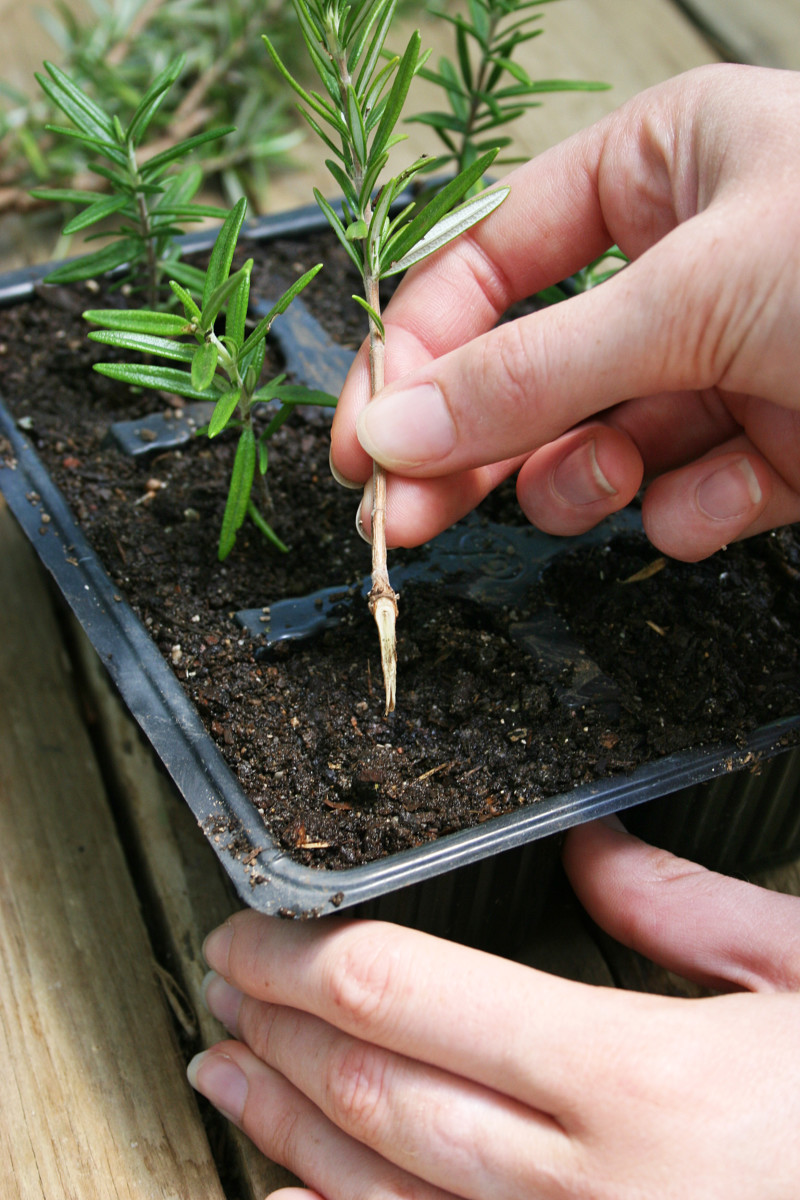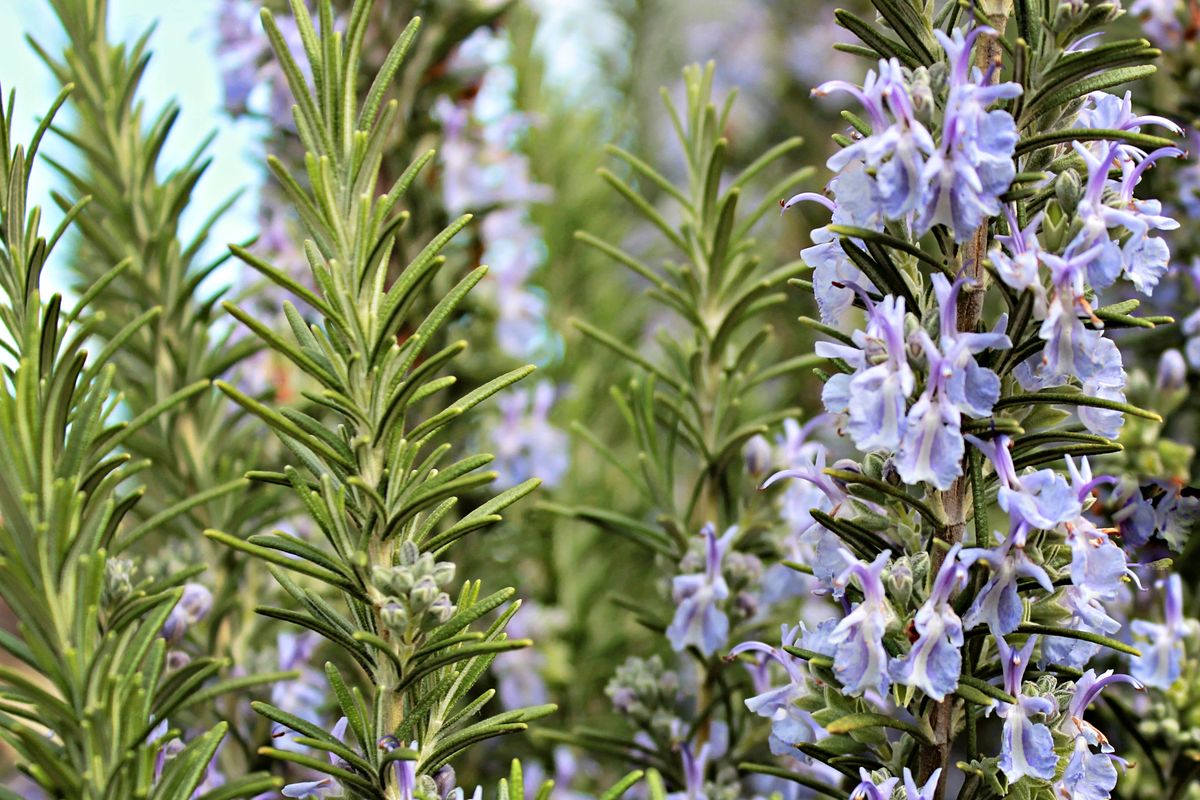Choosing the Right Conditions for Rosemary Growth
Rosemary is a Mediterranean herb that thrives in well-draining soil and full sun. To grow a healthy rosemary plant, it’s essential to replicate these conditions in your garden. When it comes to climate, rosemary prefers warm temperatures between 65°F and 75°F (18°C and 24°C). It’s also important to note that rosemary is sensitive to frost, so it’s best to grow it in a region with mild winters or bring it indoors during the colder months.
In terms of soil, rosemary prefers a slightly acidic to neutral soil pH, ranging from 6.0 to 7.0. It’s also crucial to ensure good drainage, as rosemary is susceptible to root rot in waterlogged soil. To achieve this, you can add organic matter like compost or well-rotted manure to improve soil structure and fertility.
When assessing your garden’s conditions, consider the amount of sunlight your rosemary plant will receive. Rosemary requires at least 4-6 hours of direct sunlight per day, so choose a location that receives plenty of sunlight. If you’re growing rosemary in a container, make sure it’s placed in a sunny spot.
By providing your rosemary plant with the right conditions, you’ll be well on your way to growing a healthy and fragrant herb. Remember to monitor your plant’s progress and make adjustments as necessary to ensure optimal growth. With the right care, your rosemary plant will thrive, and you’ll be able to enjoy its culinary and medicinal benefits for years to come.
For those looking to learn how to grow rosemary plant, it’s essential to understand the importance of proper conditions. By following these guidelines, you’ll be able to create an environment that fosters healthy growth and promotes the development of a robust and fragrant rosemary plant.
Preparing the Soil for Optimal Rosemary Growth
Preparing the soil is a crucial step in growing a healthy rosemary plant. Rosemary prefers well-draining soil that is rich in organic matter. To achieve this, you can add compost or well-rotted manure to the soil. This will help improve the soil’s structure and fertility, allowing your rosemary plant to thrive.
When it comes to pH levels, rosemary prefers a slightly acidic to neutral soil pH, ranging from 6.0 to 7.0. If your soil is too alkaline, you can add elemental sulfur or peat moss to lower the pH. Conversely, if your soil is too acidic, you can add lime to raise the pH.
Good drainage is also essential for rosemary growth. You can improve drainage by adding perlite or vermiculite to the soil. These materials will help prevent waterlogging and ensure that your rosemary plant’s roots receive adequate oxygen.
Some specific soil amendments that can enhance rosemary growth include bone meal, alfalfa meal, and kelp meal. These amendments are rich in nutrients and will help promote healthy growth and development in your rosemary plant.
When preparing the soil for your rosemary plant, it’s also important to consider the soil’s texture. Rosemary prefers a well-draining soil that is not too dense or heavy. You can improve the soil’s texture by adding organic matter such as compost or well-rotted manure.
By preparing the soil properly, you’ll be able to create an optimal growing environment for your rosemary plant. This will help ensure that your plant receives the necessary nutrients and water to thrive, and will ultimately lead to a healthy and fragrant harvest.
How to Plant Rosemary: A Step-by-Step Guide
Planting rosemary is a straightforward process that requires some basic knowledge and attention to detail. To ensure a healthy start for your rosemary plant, follow these steps:
Step 1: Choose a Healthy Rosemary Plant – Select a rosemary plant with a well-developed root system and a robust stem. Avoid plants with yellow or wilted leaves, as they may be stressed or diseased.
Step 2: Prepare the Planting Site – Before planting, make sure the soil is well-draining and has the right pH level for rosemary. If necessary, add organic matter or fertilizers to adjust the soil’s pH and nutrient levels.
Step 3: Handle the Roots with Care – Gently remove the rosemary plant from its container, taking care not to damage the roots. If the roots are wrapped in burlap, remove the burlap and any string or wire that may be holding it in place.
Step 4: Plant at the Right Depth – Plant the rosemary plant at the same depth as it was in the container. Make sure the crown of the plant (where the stem meets the roots) is level with the soil surface.
Step 5: Space Multiple Plants Correctly – If you’re planting multiple rosemary plants, space them 12-18 inches apart to allow for proper air circulation and growth.
Step 6: Water Thoroughly – Water the rosemary plant thoroughly after planting, and continue to keep the soil consistently moist during the first few weeks after planting.
By following these steps, you’ll be able to give your rosemary plant a healthy start and set it up for success. Remember to provide your rosemary plant with the right conditions, including plenty of sunlight, well-draining soil, and regular watering.
Learning how to grow rosemary plant requires attention to detail and a willingness to provide the right conditions for growth. By following these steps and providing the right care, you’ll be able to enjoy a healthy and fragrant rosemary harvest for years to come.
Watering and Humidity: The Key to Healthy Rosemary
Watering and humidity are crucial factors in growing a healthy rosemary plant. Rosemary requires consistent moisture, especially when it’s young. However, overwatering can be detrimental to the plant’s health, leading to root rot and other problems.
To avoid overwatering, check the soil moisture by inserting your finger into the soil up to the first knuckle. If the soil feels dry, it’s time to water. Water your rosemary plant thoroughly, making sure the pot drains well to prevent waterlogged soil.
In addition to watering, rosemary also requires a certain level of humidity to thrive. Rosemary prefers a relatively low humidity environment, around 40-50%. If your home is particularly dry, you can place the pot on a tray filled with water and pebbles to increase the humidity around the plant.
It’s also important to note that rosemary is sensitive to extreme temperatures and humidity fluctuations. Avoid placing your rosemary plant near heating or cooling vents, fireplaces, or drafty windows.
By providing your rosemary plant with the right amount of water and humidity, you’ll be able to promote healthy growth and prevent common problems. Remember to monitor your plant’s condition and adjust your watering and humidity schedule accordingly.
Learning how to grow rosemary plant requires attention to detail and a willingness to provide the right conditions for growth. By following these tips and providing the right care, you’ll be able to enjoy a healthy and fragrant rosemary harvest for years to come.
Fertilizing Rosemary: A Balanced Approach
Fertilizing rosemary is an essential part of its care. Rosemary requires a balanced fertilizer that provides the necessary nutrients for healthy growth. A balanced fertilizer should have a ratio of 10-10-10 (nitrogen-phosphorus-potassium) or 20-20-20.
When choosing a fertilizer for your rosemary plant, consider using an organic fertilizer. Organic fertilizers are made from natural ingredients and are gentler on the plant than synthetic fertilizers. Some examples of organic fertilizers include fish emulsion, bone meal, and compost tea.
It’s also important to note that rosemary has different fertilization needs at different stages of its growth. During the growing season, rosemary requires more nitrogen to promote leaf growth. During the dormant season, rosemary requires more phosphorus to promote root growth.
To fertilize your rosemary plant, follow these steps:
1. Dilute the fertilizer according to the manufacturer’s instructions.
2. Water the rosemary plant thoroughly before fertilizing.
3. Apply the fertilizer around the base of the plant, avoiding the leaves.
4. Water the plant again after fertilizing to help the fertilizer reach the roots.
By fertilizing your rosemary plant regularly, you’ll be able to promote healthy growth and prevent nutrient deficiencies. Remember to monitor your plant’s condition and adjust your fertilization schedule accordingly.
Learning how to grow rosemary plant requires attention to detail and a willingness to provide the right conditions for growth. By following these tips and providing the right care, you’ll be able to enjoy a healthy and fragrant rosemary harvest for years to come.
Pruning and Training: Shaping Your Rosemary Plant
Pruning and training are essential techniques for promoting healthy growth and preventing legginess in rosemary plants. Pruning involves cutting back the stems and branches of the plant to encourage bushy growth and prevent the plant from becoming too tall.
To prune your rosemary plant, follow these steps:
1. Use sharp, clean pruning shears to avoid spreading diseases.
2. Cut back the stems and branches to about one-third of the plant’s height.
3. Remove any dead or damaged leaves or stems.
4. Shape the plant to the desired shape, taking care not to over-prune.
Training is also an important part of rosemary care. Training involves providing support for the plant as it grows, to encourage it to grow in a specific shape or direction.
To train your rosemary plant, follow these steps:
1. Provide a trellis or stake for the plant to grow up.
2. Tie the stems to the trellis or stake using twine or wire.
3. Prune the plant regularly to encourage bushy growth and prevent the plant from becoming too leggy.
By pruning and training your rosemary plant, you’ll be able to promote healthy growth and prevent common problems. Remember to monitor your plant’s condition and adjust your pruning and training schedule accordingly.
Learning how to grow rosemary plant requires attention to detail and a willingness to provide the right conditions for growth. By following these tips and providing the right care, you’ll be able to enjoy a healthy and fragrant rosemary harvest for years to come.
Pest and Disease Management: Common Issues and Solutions
Rosemary plants can be susceptible to pests and diseases, which can affect their growth and productivity. Some common pests that can affect rosemary include spider mites, mealybugs, and aphids. These pests can cause damage to the leaves and stems of the plant, and can also transmit diseases.
To manage pests, it’s essential to monitor your rosemary plant regularly and take action at the first sign of infestation. Here are some tips for managing common pests:
Spider Mites: These tiny, spider-like insects can cause yellowing or bronzing of the leaves. To manage spider mites, spray the plant with water to dislodge the mites, and then apply insecticidal soap or neem oil.
Mealybugs: These small, white insects can cause damage to the leaves and stems of the plant. To manage mealybugs, apply insecticidal soap or neem oil, and make sure to remove any infested areas of the plant.
Aphids: These small, soft-bodied insects can cause damage to the leaves and stems of the plant. To manage aphids, spray the plant with water to dislodge the aphids, and then apply insecticidal soap or neem oil.
In addition to pests, rosemary plants can also be susceptible to diseases such as root rot and leaf spot. These diseases can be caused by fungal or bacterial infections, and can be managed with fungicides or bactericides.
To prevent diseases, make sure to provide your rosemary plant with good air circulation, and avoid overwatering. Also, remove any infested or damaged areas of the plant to prevent the spread of disease.
By monitoring your rosemary plant regularly and taking action at the first sign of pest or disease infestation, you can help prevent damage and ensure a healthy and productive harvest.
Harvesting and Preserving Rosemary: Enjoying Your Homegrown Herb
Rosemary is a versatile herb that can be used in a variety of dishes, from soups and stews to roasted meats and vegetables. To enjoy your homegrown rosemary, you’ll need to harvest and preserve it properly.
Harvesting Rosemary:
Rosemary can be harvested at any time of the year, but the best time to harvest is in the spring and summer when the plant is in full growth. To harvest rosemary, simply snip off the tips of the stems with scissors or pinch them off with your fingers.
Preserving Rosemary:
There are several ways to preserve rosemary, including drying, freezing, and storing it in oil. Here are some tips for preserving rosemary:
Drying Rosemary:
To dry rosemary, tie the stems in small bunches and hang them upside down in a warm, dry place. Once the rosemary is dry, you can store it in airtight containers.
Freezing Rosemary:
To freeze rosemary, simply chop the leaves and stems and place them in a freezer-safe bag or container. Frozen rosemary is perfect for using in soups and stews.
Storing Rosemary in Oil:
To store rosemary in oil, simply chop the leaves and stems and place them in a jar filled with oil. This is a great way to preserve rosemary and use it in cooking.
Using Fresh Rosemary:
Fresh rosemary is perfect for using in cooking and herbal remedies. Here are some tips for using fresh rosemary:
Cooking with Rosemary:
Rosemary is a versatile herb that can be used in a variety of dishes, from soups and stews to roasted meats and vegetables. Simply chop the leaves and stems and add them to your favorite recipes.
Herbal Remedies:
Rosemary has been used for centuries in herbal remedies, including teas, tinctures, and salves. Simply chop the leaves and stems and add them to your favorite herbal remedies.
By following these tips, you’ll be able to enjoy your homegrown rosemary and use it in a variety of dishes and herbal remedies.








